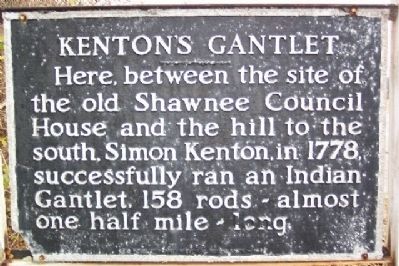As previously stated, I've decided to post some of my short Goodreads reviews of 4 or 5-star history books I've read over the last several years. Why? Well for one the work is half done and I don't have to edit them that much. Also, it's a good way to showcase how captivating history can be by praising great history authors and their books.
The first post of 2017 has nothing to do with Ohio history although Ohio played a vital role in the Underground Railroad and the abolitionist movement during the 19th century.
The first post of 2017 has nothing to do with Ohio history although Ohio played a vital role in the Underground Railroad and the abolitionist movement during the 19th century.
 Bound for the Promised Land: Harriet Tubman: Portrait of an American Hero by Kate Clifford Larson
Bound for the Promised Land: Harriet Tubman: Portrait of an American Hero by Kate Clifford LarsonMy rating: 4 of 5 stars
I decided to read this book in May 2016 when it was announced that Harriet Tubman's likeness would share the $20 bill with Andrew Jackson. I really didn't know much about her other than the typical abolition stories most of us get from a grade school history class.
Much of Harriet's story had only been told orally by Tubman and exaggerated by others over the years. Thus, the book is peppered with speculative adverbs such as maybe, possibly, perhaps, etc. I find this to be understandable since Tubman was illiterate, and Larson backs her assertions up with other writers words and letters along with other good source material to fill out the narrative. The author also debunks some of the long-held beliefs such as putting her number of trips at 13 and 70 slaves feed vs 19 trips and 300 slaves freed. An amazing feat nonetheless. I feel this is a truthful, captivating, and well-written biography, but it's much more than that. It's a story told in context.
Kate Clifford Larson fills in some of the gaps in Harriet's story with explanations of how the class and social system operated in 19th century America. This is crucial in order to understand how enslaved people were able to move about and operate on the Underground Railroad undetected. I think most of us envision the plantation system in the deep South, like Roots. But in Maryland, slaves could be hired out to work on other farms and were even allowed to visit extended family unsupervised for periods of time. Slaves were even permitted to marry free blacks. This wasn't done out of sheer kindness. The children of a slave/freeman marriage still belonged to the slave master. This act was more or less an investment. They knew that if a slave had a strong extended family, they were less likely to run away. If slaves caused trouble, they might be sold to a much crueler master in the deep South away from their family.
As if the moral problems of legal slavery were not bad enough, some slave owners cheated the system as they saw their livelihood slowly disappearing. As abolitionists made progress with Americans on the idea of emancipation, at a certain point selling your own slaves in Northern states became illegal. Instead of freeing or manumitting them at a certain age as the law dictated, some masters would simply sell them to illegal Southern slave dealers and claim they ran away. It was rare for a slave owner to be prosecuted for this.
It is unfortunate that despite Tubman's heroic accomplishments assisting slaves to freedom and later working for the Union Army, she was still quite poor and struggled in her final days and even dismissed by others after her death due to her race and social status. Tubman was a brave courageous woman who did much to help make this country truly "equal". One of America's greatest sins was kicking the can of slavery down the road until finally the lives 600,000 Americans would be sacrificed to end that system.
From what I've read about Jackson, he wouldn't like this one bit, but being famously anti-bank, one wonders how he made it on the $20 bill himself. In fact, you likely would have to get into the second half of the 20th century before you would find a US President who would have been OK with this. Maybe Kennedy, but not with the Jim Crow South in the 1960s. Times and attitudes change and I'll be glad to see Tubman on the $20 bill, even if it is over 100 years after her death.
View all my reviews































